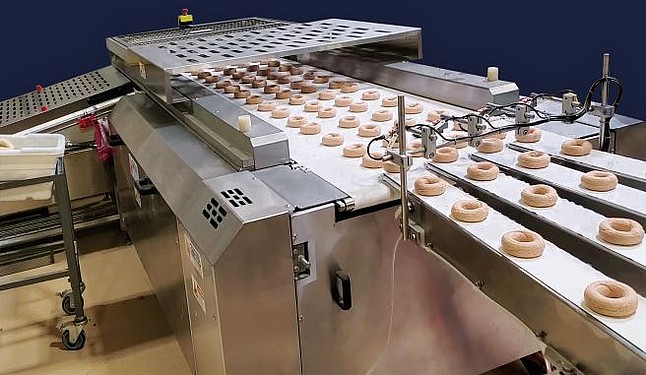The industrial production of the Bagel: a large-scale authentic quality
Craft and industry are not as far apart as they seem. The craftsman inspires the industrialist and in return the industrialist provides the craftsman with more efficient manufacturing tools. In the bakery world, the bagel is emblematic of this dialogue. The bagel’s broad appeal and variety of styles make it an interesting industrial product. But to bake bagels at industrial rates is not without its challenges.
Bagel isn't simply eaten. It is smelt, seen, and touched – and all of these features confirm if the finished product is indeed authentic. The recipe is relatively simple, but the manufacturing process is more delicate. High-protein flour and water are the two key ingredients that one must learn to handle with finesse to give the bagel its signature shape and its crust a crunchy texture. The quality of the yeast and shortening chosen will also have an impact on the final quality of the bagel. All of this must be measured out precisely as a craftsman would, taking care of each ingredient. That's why the industrial process must respect the original bagel recipe by following every step of the traditional technique.
“The secret to a great bagel is plenty of time to proof and retard the dough prior to boiling and baking. But, to seal in the magical gasses which give bagels their signature flavor & aroma, it all starts with a well-formed product” says Wayne Ferdman, 30-year bagel veteran and baking technologist at ABI Ltd. Therefore, even if the production rates can be quite high, there are stages that cannot be rushed.
First, forming the dough. Shaping the bagel presents its own difficulties, especially at an industrial rate. For the ring shape to hold, a dense dough is needed, which requires powerful equipment to handle it. Then comes the vital step of proofing the dough. Here the experience and skills of the craftsmen provide the industrialist with several choices. The most common technique is to start by making the dough rise in a warm atmosphere, and then retard its fermentation at low temperature. The order and duration of these steps will have an impact on the size and texture of the bagel.
Bagels are also unique since they are boiled before being baked. "Bagels require time to build strength and flavor. They need to boil in water with a minimum temperature of 88°C to give them their thick, shiny outer crust," says Ferdman. Again, the process chosen will greatly influence the appearance and texture of the bagel. Depending on whether the bagel is submerged, or passed through a steam tunnel or under a waterfall, the crust will be more or less thin and crispy.
Likewise, how the bagel is baked varies its color, crust thickness, and texture.
Baking on hearth in a tunnel oven is the best way to obtain an authentic bagel. However, the choice of the hearth: plain or mesh belt is key to determine the characteristics of the final product. Plain hearth will give your bagel a slick bottom, while the mesh belt will draw a slight marking under the product. The choice will mainly depend on your customers and market expectations. “To precisely control crust thickness and coloration, which are 2 important quality parameters for the bagel, it is important to choose an oven with advanced technology allowing to fine tune your bake.” advises Marie Laisne, Oven product manager at Mecatherm.
Next is the cooling phase. As is the case for all bakery products, cooling must be done with hygiene and sanitation as a top priority. Cooling equipment, therefore, must be designed to allow precise control of the cooling environment.
The bagel is commonly processed and sold frozen, which allows the manufacturers to produce large quantities of bagels with an extended shelf life while keeping a perfect product quality.
The growing demand for bagels offers an undeniable industrial opportunity. The well-established concept makes mass production possible while respecting the authenticity of the circular bread recipe. Moreover, by controlling production with precision, it is possible to guarantee quality and uniformity of bagels at the end of the line. Finally, well-designed equipment will furthermore offer manufacturers the possibility to expand the variety of bagels and customize the products according to local consumer trends. After all, modern baking technology allows high production rates, all while maintaining product versatility.


